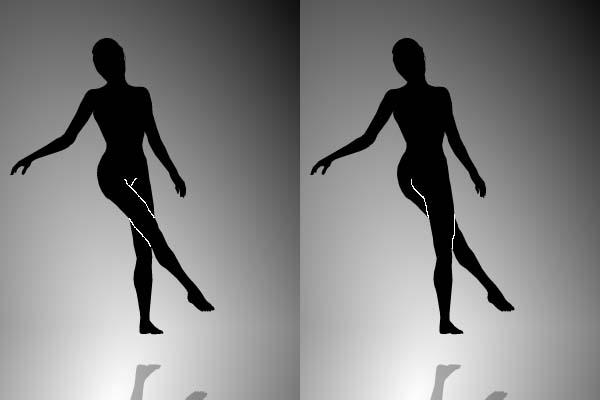我来解释那个舞女[ 耶鲁5年神奇研究成果:一张图分出你是用左脑还是右脑]
本文转自网络
Copyright © sonery
如果你看见这个舞女是顺时针转,说明你用的是右脑;
如果是逆时针转,说明你用的左脑。
耶鲁大学耗时5年的研究成果,据说。
14%的美国人可以两个方向都能看见
顺时针转的话 , 属於是用右脑较多的类型
逆时针转属於使用左脑较多的类型
大部分人的眼里里是逆时针方向转动 , 但也有人看来是顺时针方向转动的 .
顺时针的情况 , 女性比男性多 ~
科学人杂志--天才的特殊思维顶叶负责掌管脑中的数学和逻辑 ,这也是爱因斯坦成为天才的秘密。但不可否认的 ,爱因斯坦丰富的想像力与创造力 ,是使他的右脑不断激发出潜在能力的重要因素之一。
爱因斯坦的左顶叶,神经元与神经胶细胞的比例小于常人。神经胶细胞是神经元的支援细胞。根据过去的研究,哺乳类神经元与神经胶细胞比例,从小鼠到人有逐步 降低的趋势,有些学者因而推测,神经元执行的功能越复杂,越需要神经胶细胞的支持。也就是说,在哺乳类中,神经元与神经胶细胞比例可当做反映智力的量表。此外,从神经解剖学来说,顶叶下段皮质是听觉、视觉、触觉信息汇聚之处,我们又有神经心理学病例,显示顶叶下段受伤后,病人就无法进行复杂的思考,阅读、写字、计算能力都受损。
左脑因为是以语言处理讯息 ,控制知识、判断力、思考力因此被称为「知性脑」;右脑则控制著自律神经与字宙波动共振 ,由于是图像脑 ,因此造型能力优越 ,被称为「艺术脑」。
有关右脑的神奇功能研究 ,是始于 1 9 8 1年加州理工学院罗杰· 史贝利 博士研究右脑获得诺贝尔奖以后 ,人们才开始对右脑有所认识 ,在此之前 ,人们并不认为左脑与右脑的功能有那么大的差别。史贝利在分割脑的实验中发现 ,左脑与右脑这两个半球完全以不同的方式在进行思考 ,他发现左脑用语言进行思考 ,右脑则是以图像进行思考;左脑偏向语言、逻辑性的思考 ,右脑则是影像和心像的思考。
根据七 田真 博士的研究 ,原来人在诞生之初 ,右脑的能力还很发达 ,右脑具备了超越常识那种几乎可称为全然未知的天才似的能力 ,这种能力自古以来就隐藏在人们脑海里 ,是一种超越时间、空间 ,与无限境界相连结的能力 ,但是因为人类世界是以教导、开启左脑为主 ,让小孩子努力学习语言以及往后生存所必需的知识 ,久而久之 ,左脑越来越发达 ,右脑却因为少用而日形退化。至于什么样的成人比较容易打开右脑 ,七 田真 博士认为 ,心思专注、纯真没有成见的人 ,比较容易进入神奇的右脑世界。
你相信超能力吗?如果你有看过 (雨人 )这部电影 ,一定对片中达斯汀霍夫曼饰演的哥哥印象深刻 ,他不但能正确快速数出散落一地的火柴数目 ,而且饰演他弟弟的汤姆克鲁斯还利用他天赋异禀的「透视」能力 ,上赌场找人玩扑克牌 ,结果对手的牌在达斯汀霍夫曼的「全神贯注」下 ,被透视得一 览无疑 ,汤姆克鲁斯因此赢了一大笔钱。
或许你会认为那是电影夸张其事 ,现实世界中 ,人不可能具备那样的能力。如果你这么想 ,你就是犯了习惯左脑思考的错误 ,其实 ,人类大脑的另一半 -右脑 ,拥有的能力是左脑思考者很难想像的。
当我尽量不看人像,而是把目光对准地面上脚的阴影的时候,可以在脑子里"想",要它顺时针转,她就顺时针,要她逆时针,她就逆时针,仿佛你的思维可以 控制图片的转动一样。而如果精神高度集中,就可以让人像左右摆动,根本绕不出一个完 整的圈子。我一直在努力尝试,看能不能把人像给定住,让她静止不动。这个游戏最好玩的地方在于,你只能自己玩,然后你和别人说你的感受,他们一开始会绝对 不相信。但是,你又没有办法把你看到的景象用任何方式记录下来,给别人做个证明,因为那只存在于你的脑子里。但是,一旦别人也适应了,能看到这一点的时 候,他们会无条件地赞同你,仿佛你们分享了天地间的一大秘密。
这是CSDN的A_B_C_ABC提供的图

The animation shows a rotating silhouette, the catch is that it can be perceived to be rotating clockwise or counter-clockwise. It tends to be a bit hard to change the perception of the direction of rotation once one particular direction has been recognized , I've read that for some people it switches direction more or less randomly, after looking at it for a while.
The why it works is relatively straightforward. Whether the rotation is clockwise or counter-clockwise is impossible to say if it happens in the same plane as where the viewer's viewpoint lays and there's no feeling of depth.
It's easy to reproduce, just look at this example I quickly put together.
by Ero Carrera
The original animation is most definitely amusing... Seems like 9 out of 10 times, I start off seeing it "rotate" clockwise. It seems near impossible to "change direction" while still looking at it when it's "rotating" clockwise like this.
But on the other hand, on the rare occasions that I do start off seeing it "rotate" anti-clockwise, somewhere along the line it seems to "change direction" (usually under a couple of minutes into staring at it).
So perhaps there is an ongoing neural bias component that is continuously present in addition to any initial bias. I've also noticed that looking at the animation from the corner of my eyes (doesn't matter which eye) makes it easier to willfully "change direction".
Amusing indeed :-)
by Nishad Herath
This experiment says something about the hard-wired algorithm in our brains that takes a 2D image from our optical nerves and converts it to a 3D model with which our conscious mind can work. The first observation is that it fills in missing details without us being aware of that (as is evident by us not perceiving the dancer as being of ambiguous orientation and rotation).
The second is that when additional details appear that conflict with the current model, it can instantly change the output model. This doesn't seem to happen very often, which is why the dancer is so surprising to us.
This might be similar to the neural phenomena that Escher always played with. He didn't use animation, though.